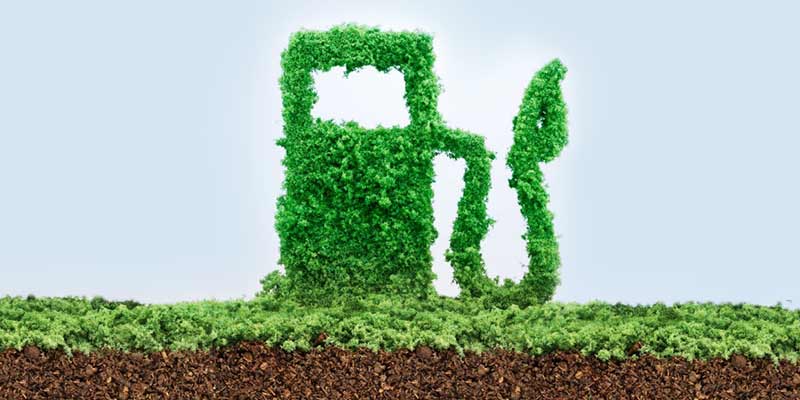- India
- Oct 06
India becomes world’s largest producer and consumer of sugar
• In Sugar season (October-September) 2021-22, a record of more than 5,000 lakh metric tonnes (LMT) sugarcane was produced in the country out of which about 3,574 LMT of sugarcane was crushed by sugar mills to produce about 394 LMT of sugar (sucrose).
• Out of this, 35 LMT sugar was diverted to ethanol production and 359 LMT sugar was produced by sugar mills.
• The ministry of consumer affairs, food & public distribution said that India has emerged as the world’s largest producer and consumer of sugar as well as the world’s second largest exporter of sugar.
• The season has proven to be a watershed season for the Indian sugar sector. All records of sugarcane production, sugar production, sugar exports, cane procured, cane dues paid and ethanol production were made during the season.
• India’s sugar exports rose 57 per cent to 109.8 lakh tonnes during 2021-22 marketing year ended September, resulting in foreign currency inflow worth about Rs 40,000 crore into the country. India achieved the highest exports, without any financial assistance from the government.
• India’s sugar exports stood at 70 lakh tonnes in 2020-21 marketing year, 59 lakh tonnes in 2019-20 and 38 lakh tonnes in 2018-19.
• During 2021-22 marketing year, sugar mills procured sugarcane worth more than Rs 1.18 lakh crore and released payment of more than Rs 1.12 lakh crore with no financial assistance (subsidy) from the central government.
• Thus, cane dues at the end of sugar season are less than Rs 6,000 crore indicating that 95 per cent of cane dues have already been cleared. It is also noteworthy that for 2020-21, more than 99.9 per cent cane dues are cleared.
Diverting sugar for ethanol
• Growth of ethanol as a biofuel sector in the last 5 years has amply supported the sugar sector as use of sugar to ethanol has led to better financial positions of sugar mills due to faster payments, reduced working capital requirements and less blockage of funds due to less surplus sugar with mills.
• During 2021-22, the ministry said that mills/distilleries earned revenue of about Rs 18,000 crore from sale of ethanol which has also played its role in early clearance of cane dues of farmers.
• Ethanol production capacity of molasses/sugar-based distilleries has increased to 605 crore litres per annum and the progress is still continuing to meet targets of 20 per cent blending by 2025 under Ethanol Blended Petrol (EBP) Programme.
• In the new season, the diversion of sugar to ethanol is expected to increase from 35 lakh tonnes to 50 lakh tonnes, which would generate revenue for sugar mills amounting to about Rs 25,000 crore.
Ethanol blending
• The energy demand in our country is rising due to an expanding economy, growing population, increasing urbanisation, evolving lifestyles and rising spending power. About 98 per cent of the fuel requirement in the road transportation sector is currently met by fossil fuels and the remaining 2 per cent by biofuels. Today, India imports 85 per cent of its oil requirement.
• Domestic biofuels provide a strategic opportunity to the country, as they reduce the nation’s dependence on imported fossil fuels. In addition, when utilised with appropriate care, biofuels can be environmentally friendly, sustainable energy sources. They can also help generate employment, promote ‘Make in India’, Swachh Bharat, doubling of farmers’ incomes and promote waste-to-wealth generation.
• India is the world’s fifth largest producer of ethanol after the US, Brazil, EU and China.
• Ethanol worldwide is largely used for consumption but nations like Brazil and India also dope it in petrol.
• Ethanol is one of the principal biofuels, which is naturally produced by the fermentation of sugar by yeast or via petrochemical processes such as ethylene hydration. It has medical applications as an anti-septic and disinfectant. It is used as a chemical solvent and in the synthesis of organic compounds, apart from being an alternative fuel source. It is an agro-based product, mainly produced from a by-product of the sugar industry, namely molasses.
• Ethanol blending offers significant advantages such as increase in Research Octane Number (RON) of the blend, fuel embedded oxygen and higher flame speed. These properties of ethanol help in complete combustion and reduce vehicular emissions such as hydrocarbon, carbon monoxide and particulate matter.
• The government launched Ethanol Blended Petrol (EBP) Programme in 2003 for undertaking blending of ethanol in petrol to address environmental concerns due to fossil fuel burning, provide remuneration to farmers, subsidize crude imports and achieve forex savings.
• India has achieved the target of supplying 10 per cent ethanol blended months ahead of schedule and is aiming to double the blend by 2025-26 in order to cut oil import dependence and address environmental issues.
• Blending locally produced ethanol with petrol will help India strengthen its energy security, enable local enterprises and farmers to participate in the energy economy and reduce vehicular emissions.
• The government has promoted usage of biofuel in the country by notification of the National Policy on Biofuels (NPB), 2018 which allows use of multiple feedstocks for producing bio-ethanol for increased supply of ethanol for blending with petrol.
• With the vision to boost agricultural economy, reduce dependence on imported fossil fuel, save foreign exchange on account of crude oil import bill and reduce air pollution.
Manorama Yearbook app is now available on Google Play Store and iOS App Store


